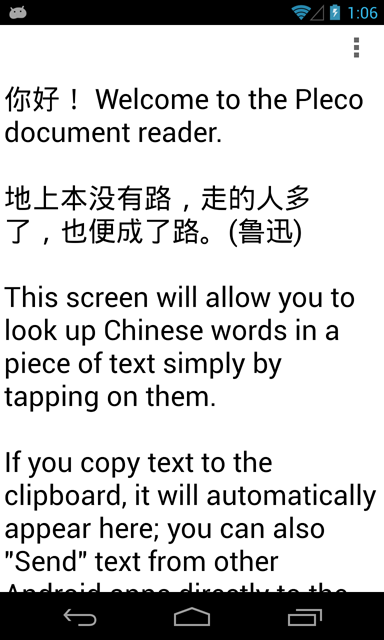
Pleco for Android Instruction Manual : Document Reader Tutorial
This tutorial will explain how to find, open, and view documents in Pleco's document reader module. The document reader can be used to view text in the system clipboard in the free version of Pleco, but to open / bookmark text files you'll need the paid Text File Reader add-on; it can be purchased through the Add-ons tab inside of Pleco.
First, to open up the Pleco document reader, press on your device's menu button and tap "Reader" to bring up this screen:

If there's Chinese text in your system clipboard, that will be displayed here instead of this welcome message; the basic / default document reader mode simply shows you whatever text is in your clipboard.
Tap on a Chinese word to look it up (just as you can do in a dictionary definition):
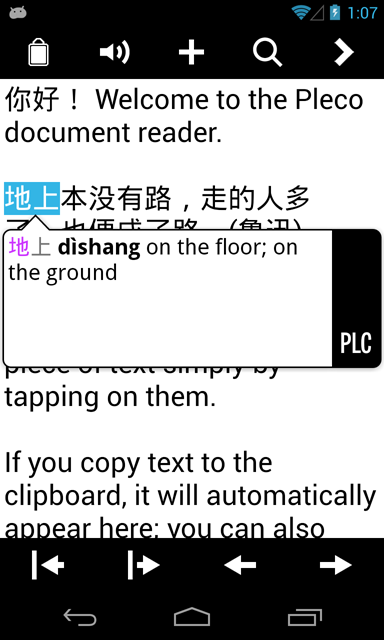
Tap on the right arrow button at the bottom right corner of the screen to advance to the next word:
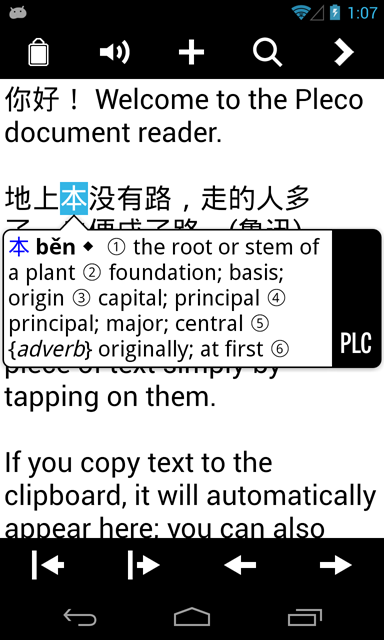
Keep tapping the right arrow button until you get to a multi-character word:

Now, tap on the arrow button at the bottom LEFT corner of the screen to shrink the highlight to a single character:
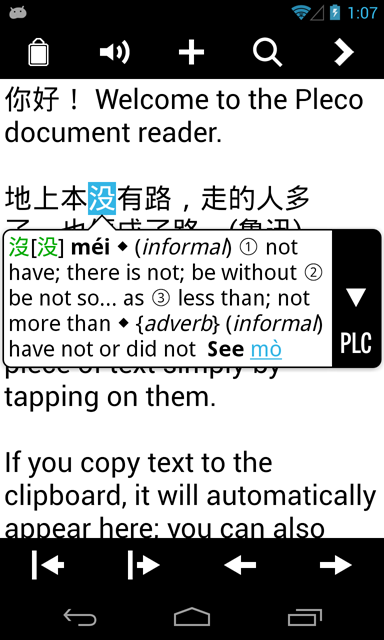
This is an easy way to look up the meanings of individual characters in multi-character words. (the button next to it expands the selection again, and the left arrow button next to that moves to the previous word instead of the next one).
Tap on the button at the bottom right corner of the popup "bubble" to see the same word in a different dictionary:
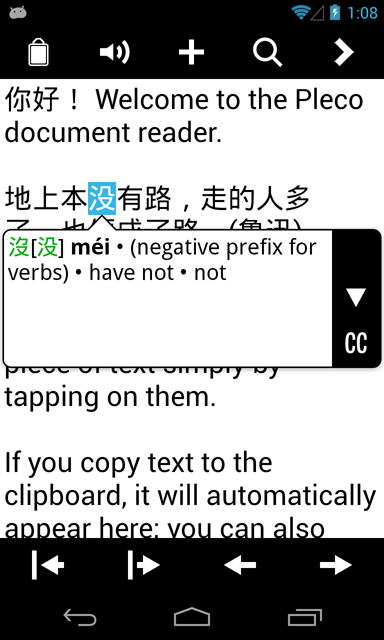
This dictionary selection is "sticky," so Pleco will continue looking up words from this dictionary until you switch to another one.
Tap on the button at the top right corner of the screen to view a full-screen version of this dictionary definition:

Example sentences in dictionaries like PLC are hidden when they're shown in the popup definition "bubble" but visible in fullscreen mode, so if you'd like to see example sentences for a common word that you look up in the reader, just tap on this button to do so.
Press your device's back button to return to the reader screen, then press it again to hide the popup definition bubble; you can also do this by tapping anywhere in the screen outside of it.
Press your device's back button again to return to the main dictionary search screen, press your device's menu button, and tap "History."
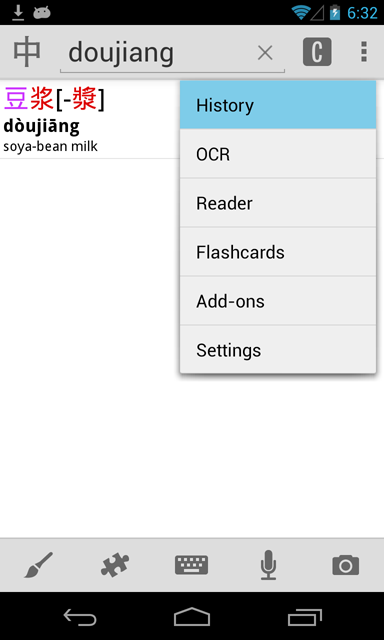
That will take you to this screen, showing the history of recently viewed dictionary entries.
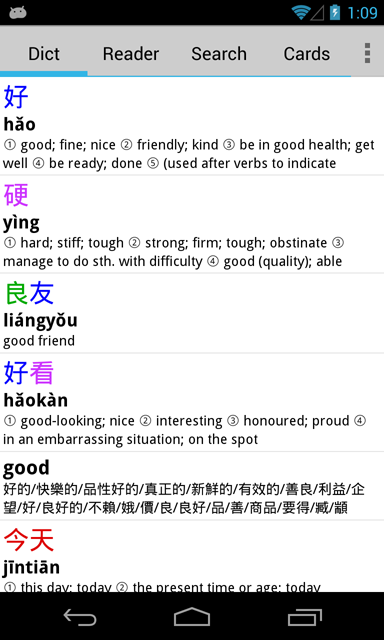
Tap on the "Reader" tab at the top of the screen to go into the document reader entry history:

This is an easy way to review words that you recently looked up in a document. It normally only includes words that you tap on, or pull up a full-screen definition for using the > button, but you can configure it (in Settings / General / Popup Definition) to include words accessed via the arrow buttons as well.
You can easily use this clipboard reader function to look up text from a Chinese web page (or any other Chinese-language document you pull up on your device). Open up your phone's web browser and type zh.wikipedia.org (the Chinese version of Wikipedia), or any other Chinese-language web page that you like:

Tap-and-hold your finger on a character or word in the text to select it, then release your finger and you should see a set of draggable handles appear next to your text selection. Drag them to select an entire sentence:
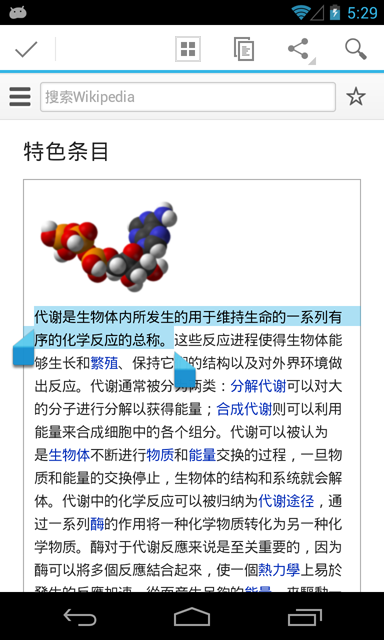
Tap on the "Copy" button, highlighted in blue in this next screenshot, to copy the text to the clipboard:
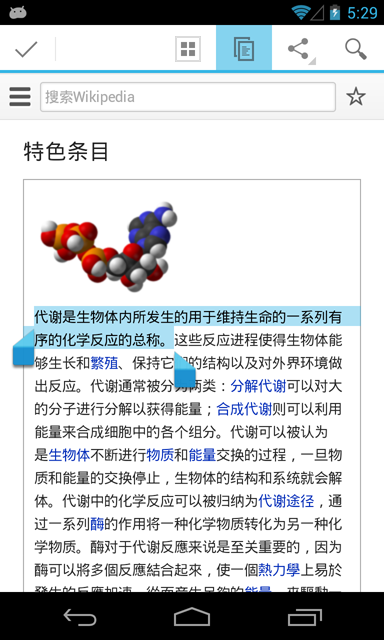
Reopen Pleco and reopen the document reader and you should see your copied text:

You can now tap on characters in this text to look them up. You could also tap on the button to the right of the "Copy" button to share the text directly with Pleco, though this is not supported in all apps.
Another way to get text from a web page is by using the "Share" command to share the entire page. Go back to the web browser, press the menu button and tap "Share...":
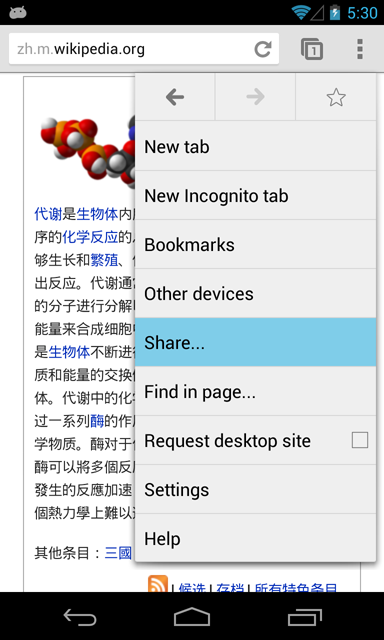
Tap "Pleco Reader" to immediately bring up the web page in Pleco's document reader:
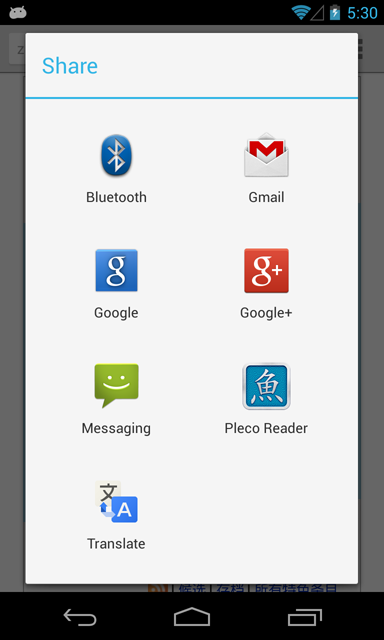
You might see some gibberish text at the start of the document (we're working to remove this but it doesn't work perfectly on every page yet). But just scroll down a bit farther and you should see the full text of the page:
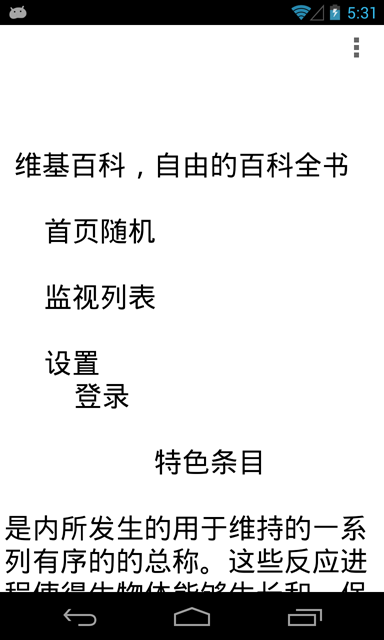
The rest of this tutorial requires our paid Text File Reader add-on, so if you haven't purchased it yet you can stop reading here.
Before you can read a text file with our document reader, you first have to get it onto your device. You can copy text files over to your device's SD card from your computer over USB, but it's also possible to download a text file directly from a web page.
Open up your Android device's web browser and type in android.pleco.com:
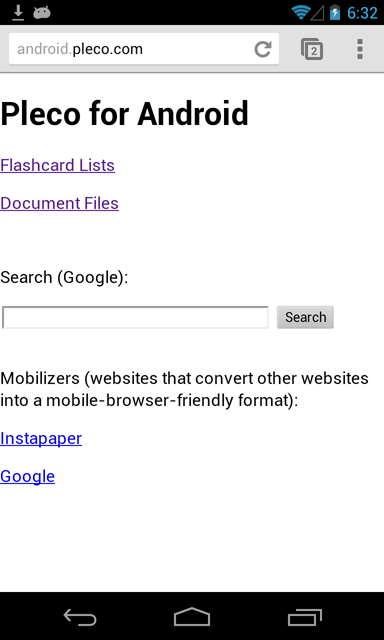
Tap on "Document Files."

Tap on "Essentials."
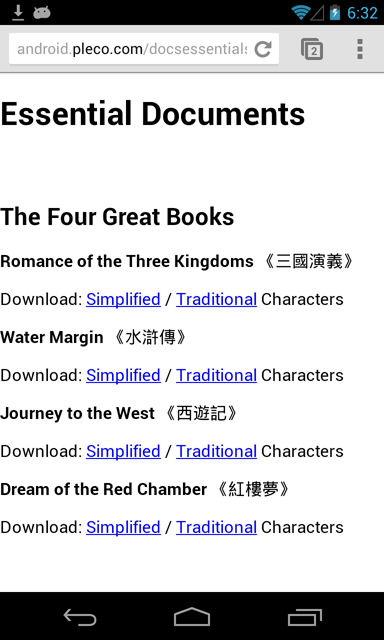
Scroll down to the "Lu Xun" section:

Tap-hold on the "Traditional" or "Simplified link under "The True Story of Ah Q" and choose "Save link" from the menu to save the file to your phone's SD card.
Open up the reader again by going back into Pleco, pressing your device's menu button, and tapping "Reader." Tap on "Open File" to bring up our file browser:
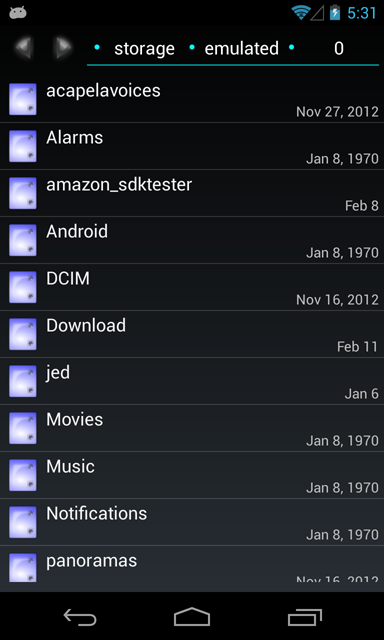
Tap on "download" to open the download directory:

And tap on your newly downloaded text file "ahq.txt" to open it
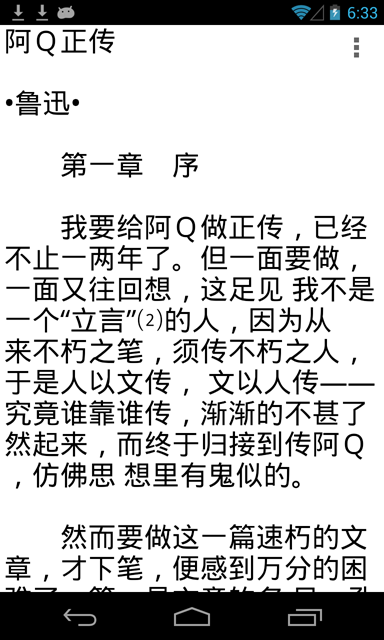
You can now tap on words in this document to look them up just as in the clipboard reader function.
Try scrolling the document down by tapping and dragging it (just as in an email / web page). Then, to move through the document more quickly, press your device's menu button and tap "Toggle Scroll" to bring up a horizontal scroll bar:
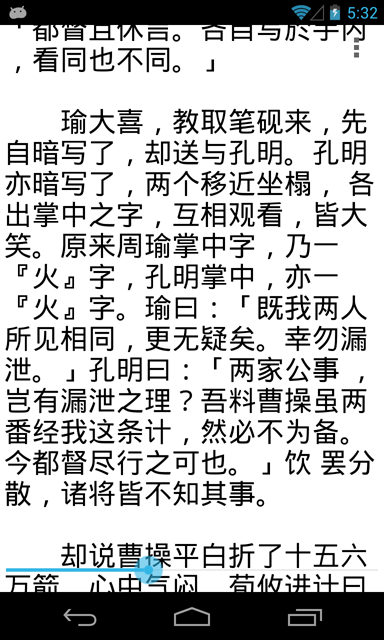
When you exit / reopen a document, you'll automatically be returned to your last position in it. You can bookmark other locations to return to later by pressing your device's menu button and tapping "Add Bookmark":
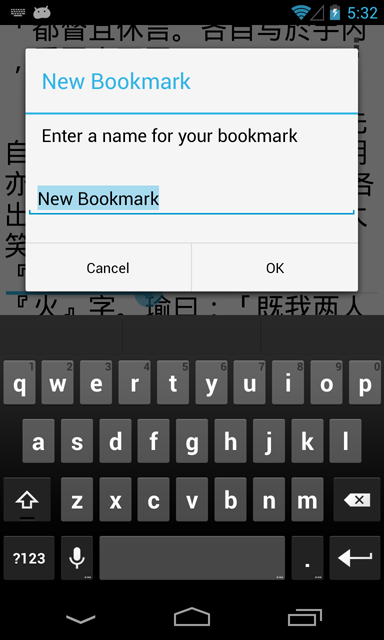
Type in a name for your new bookmark, then tap "OK" to save it. Scroll back up to the top of the document, then press the menu button again and select "Bookmarks + Recents" to bring up this screen:
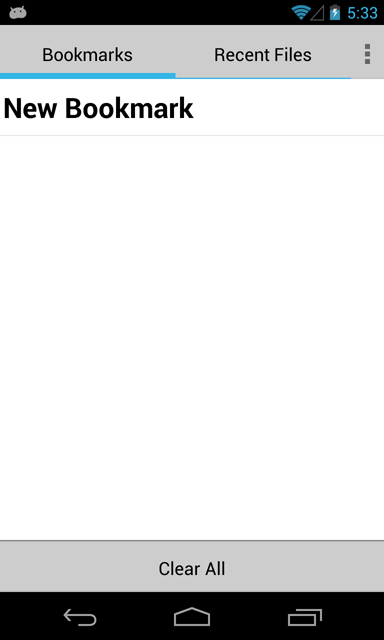
Tap on the name of your bookmark to return to it. (you can tap-hold on a bookmark's name to rename or delete it)
That's the end of this tutorial. From here, you can continue on to the Flashcards tutorial, which explains how to create and test yourself on vocabulary lists, or dive right into the Dictionary, Reader, Flashcards, Add-ons, or Settings reference manuals.
Return to Table of Contents